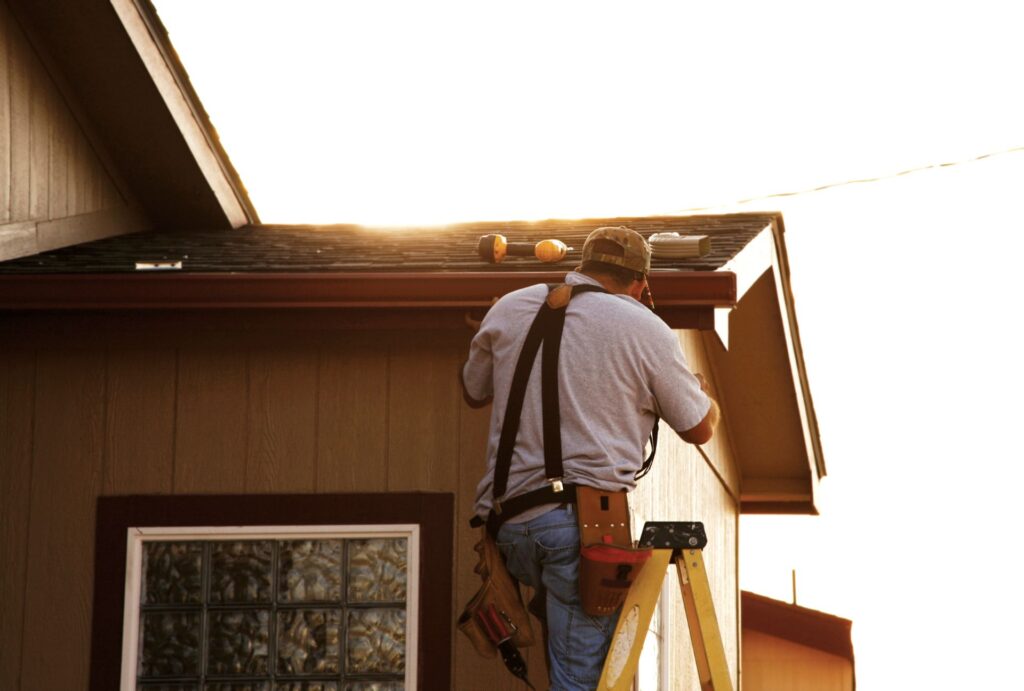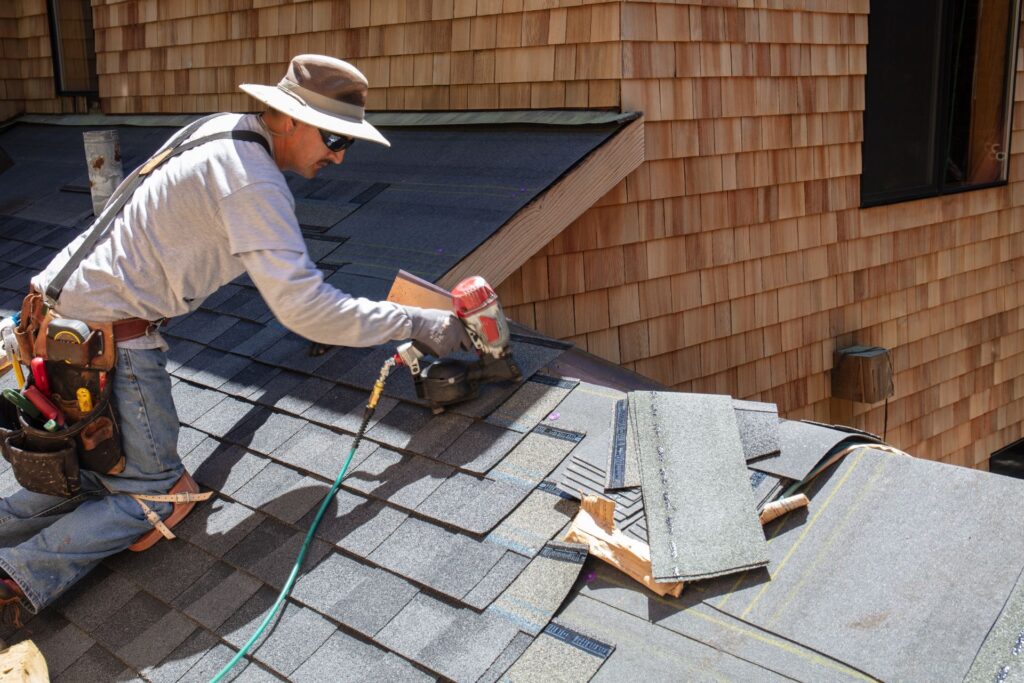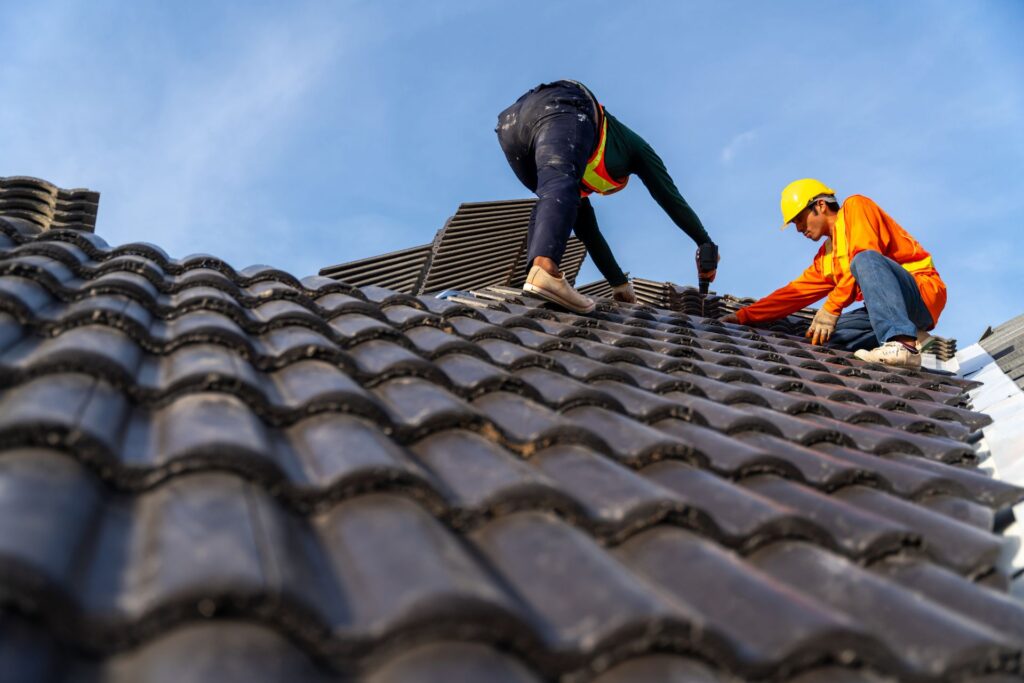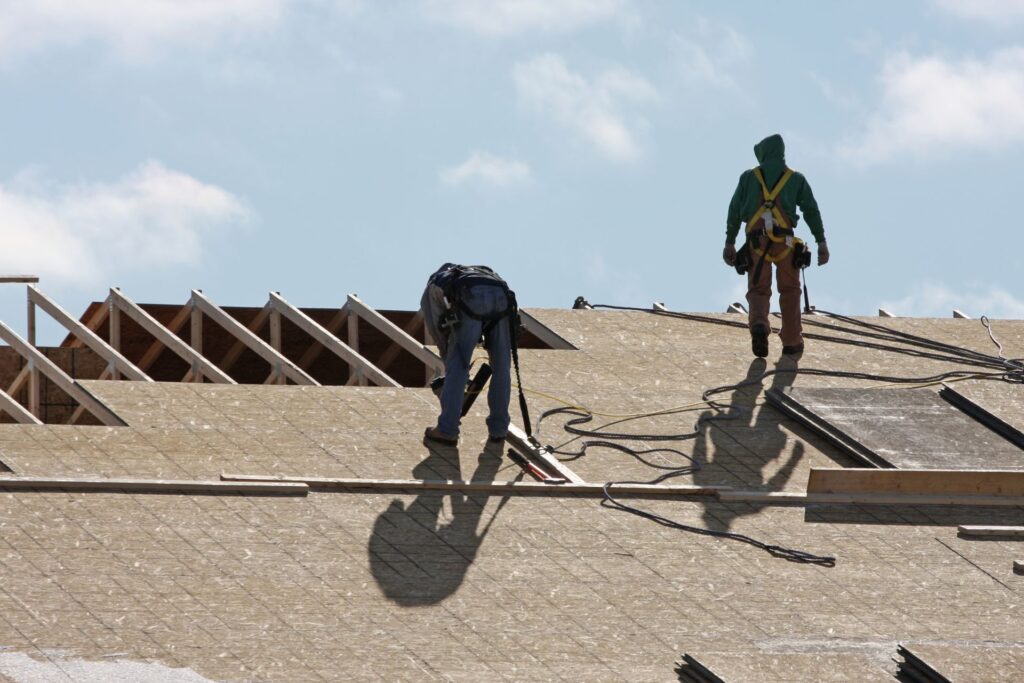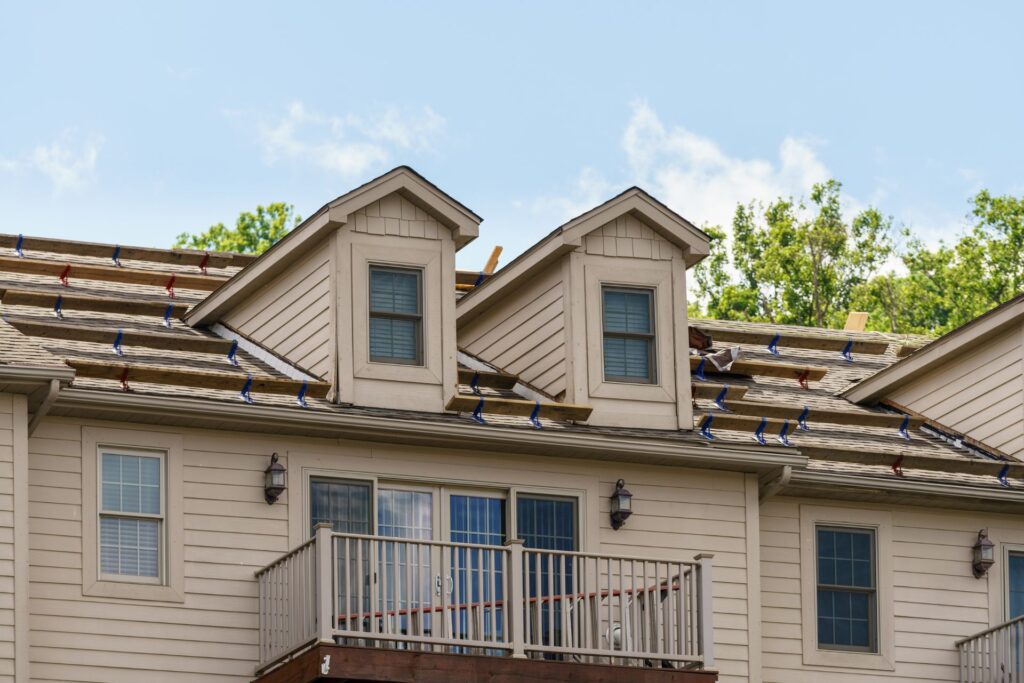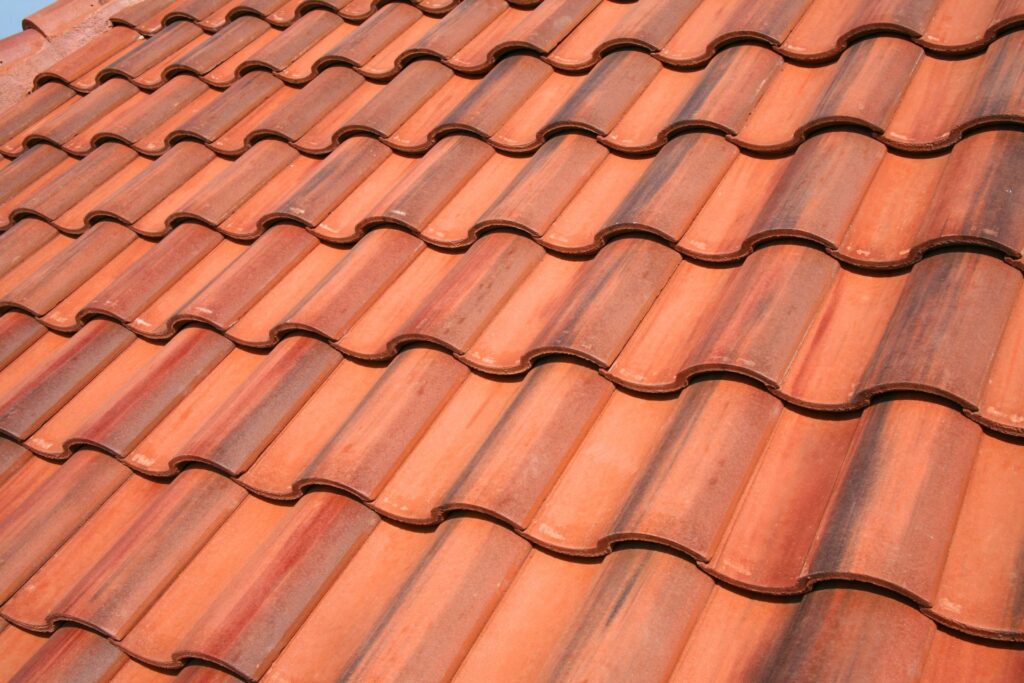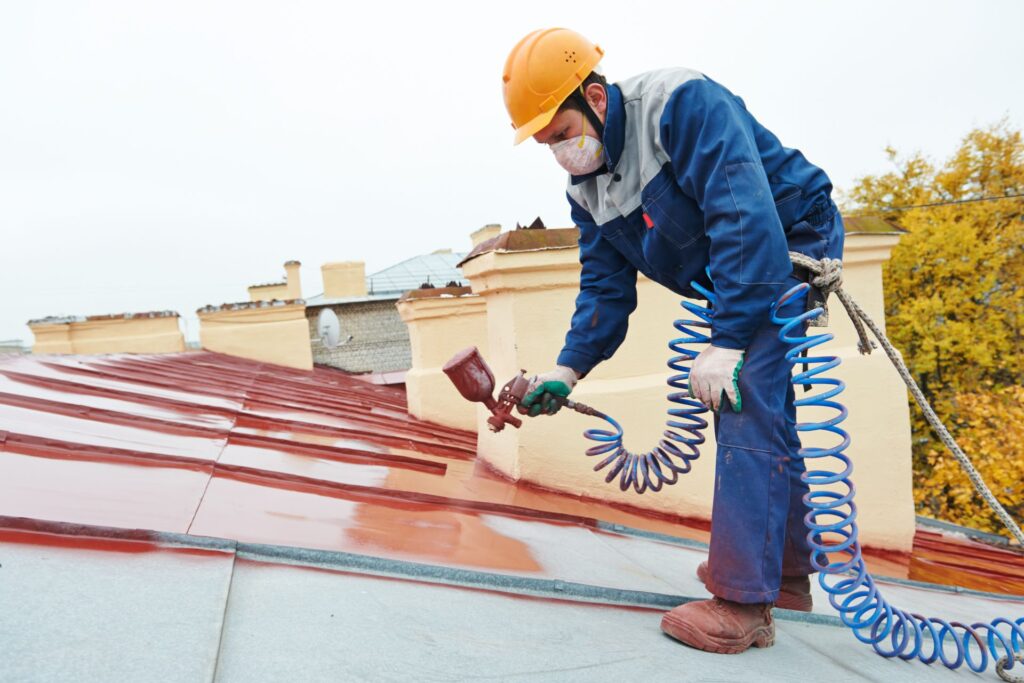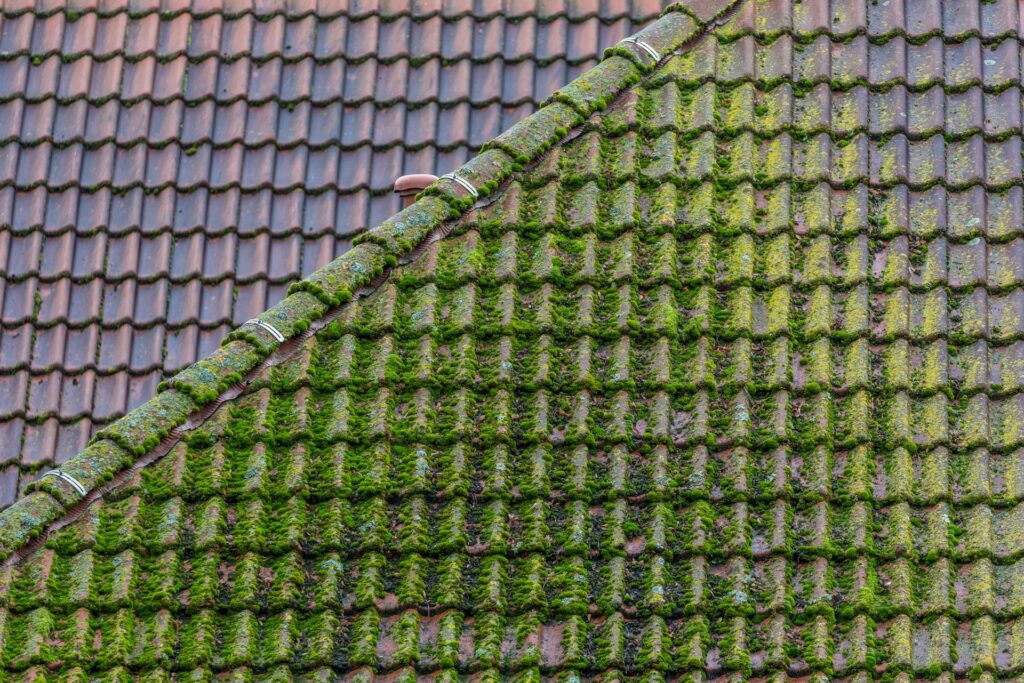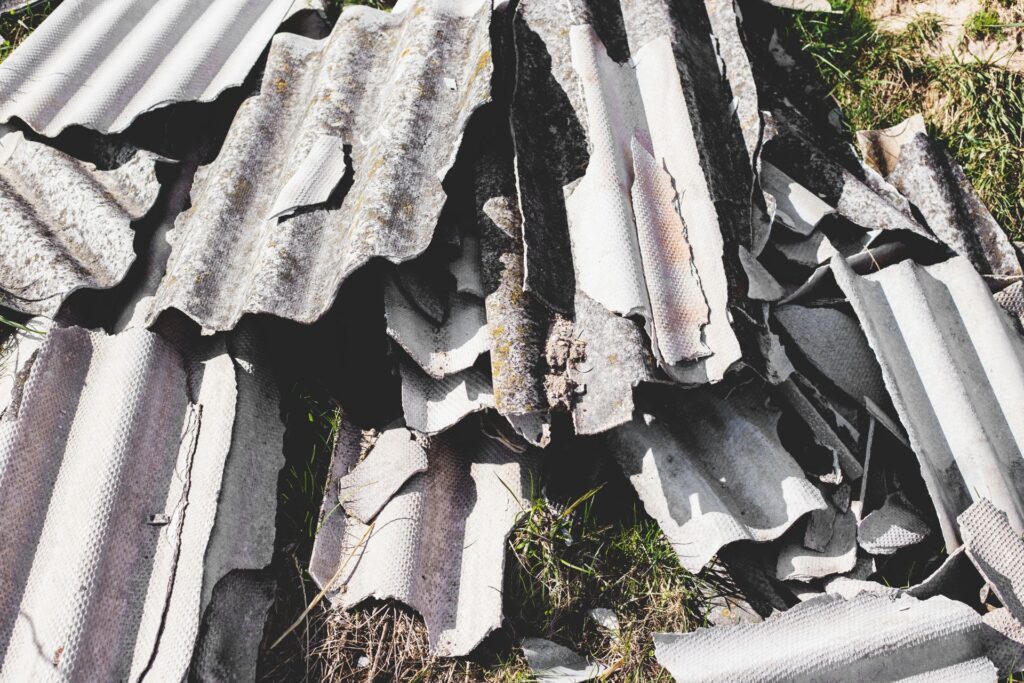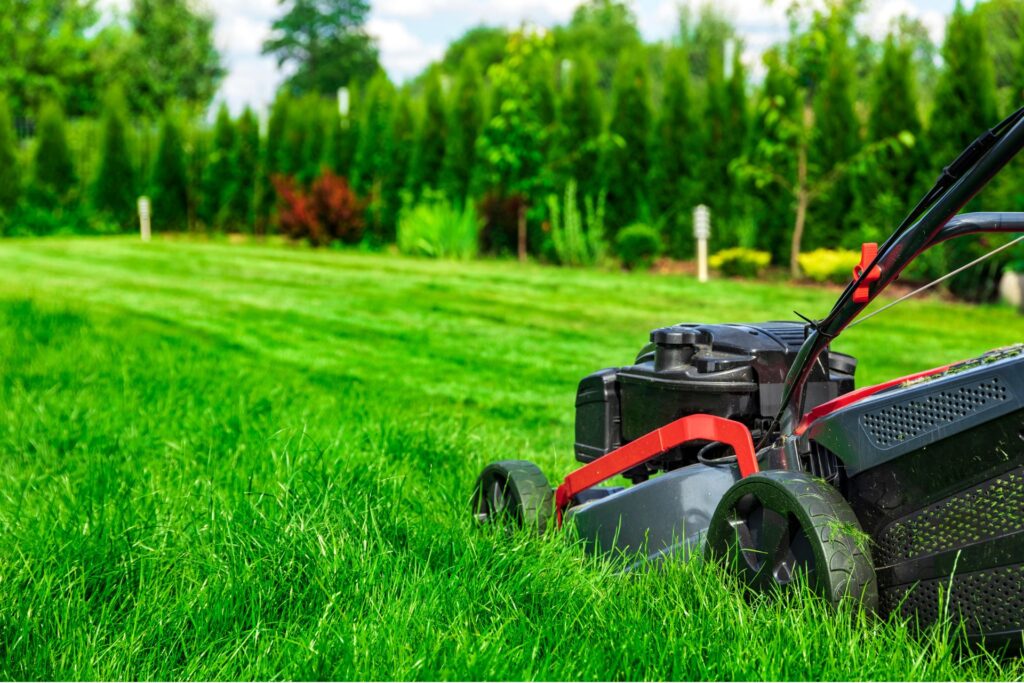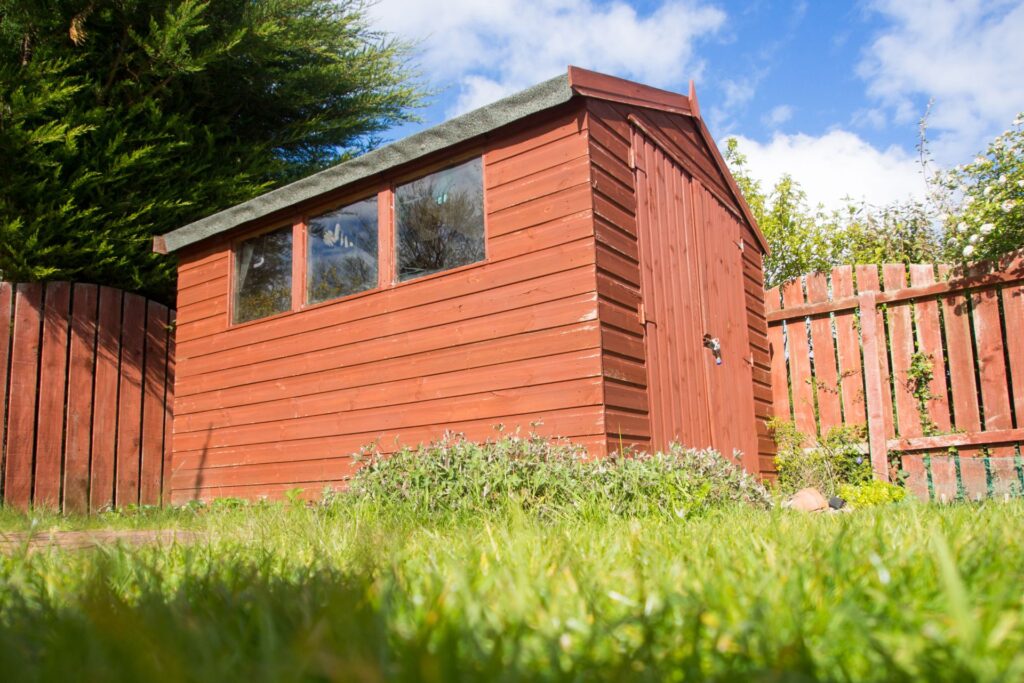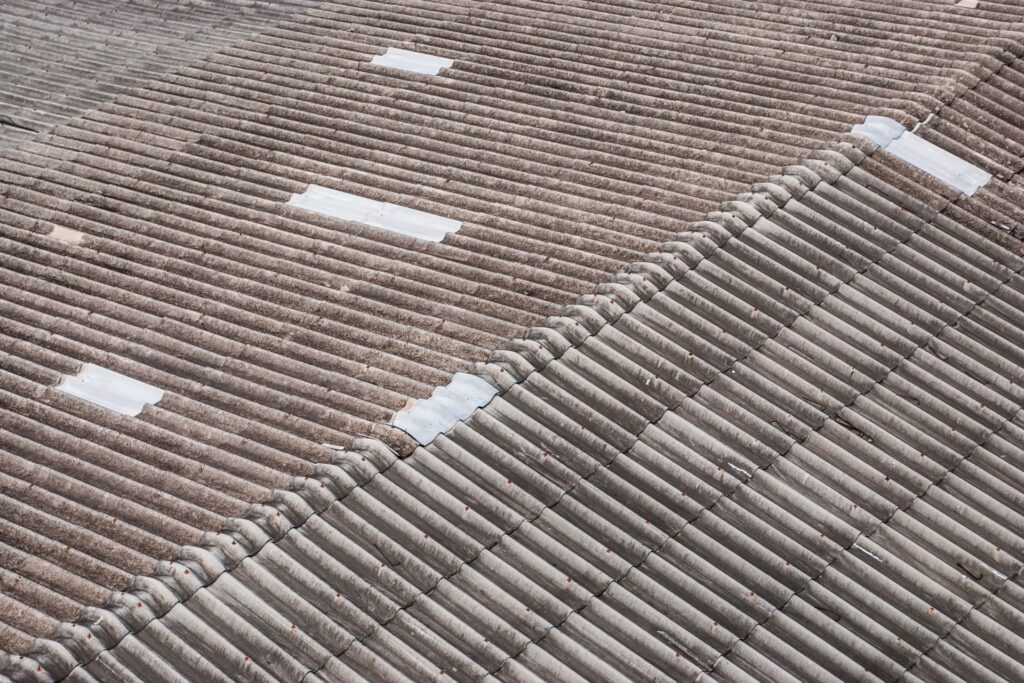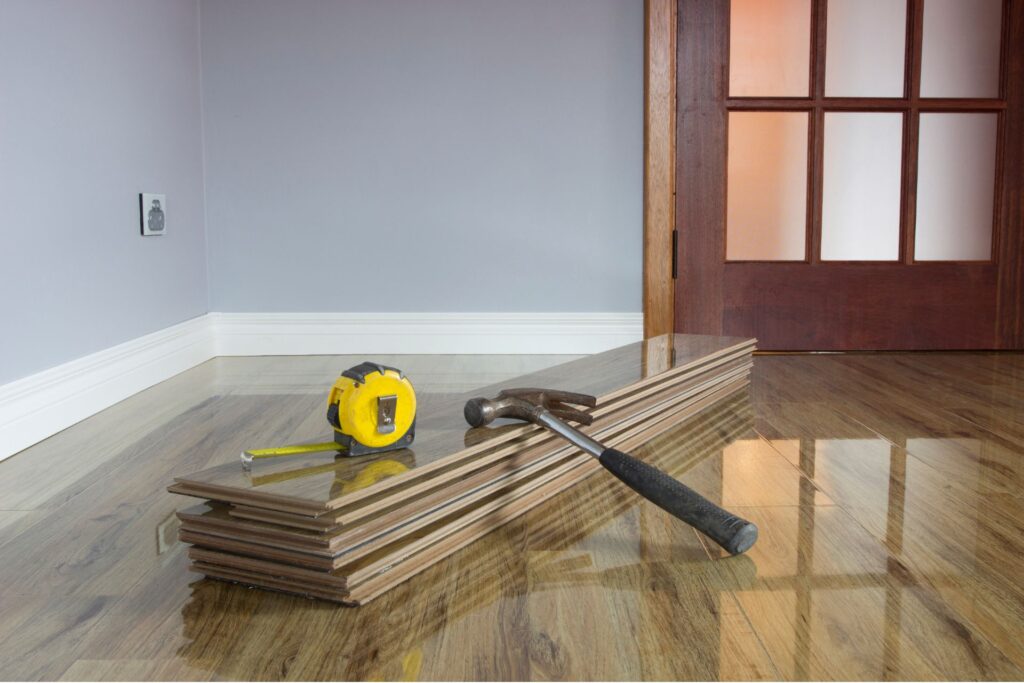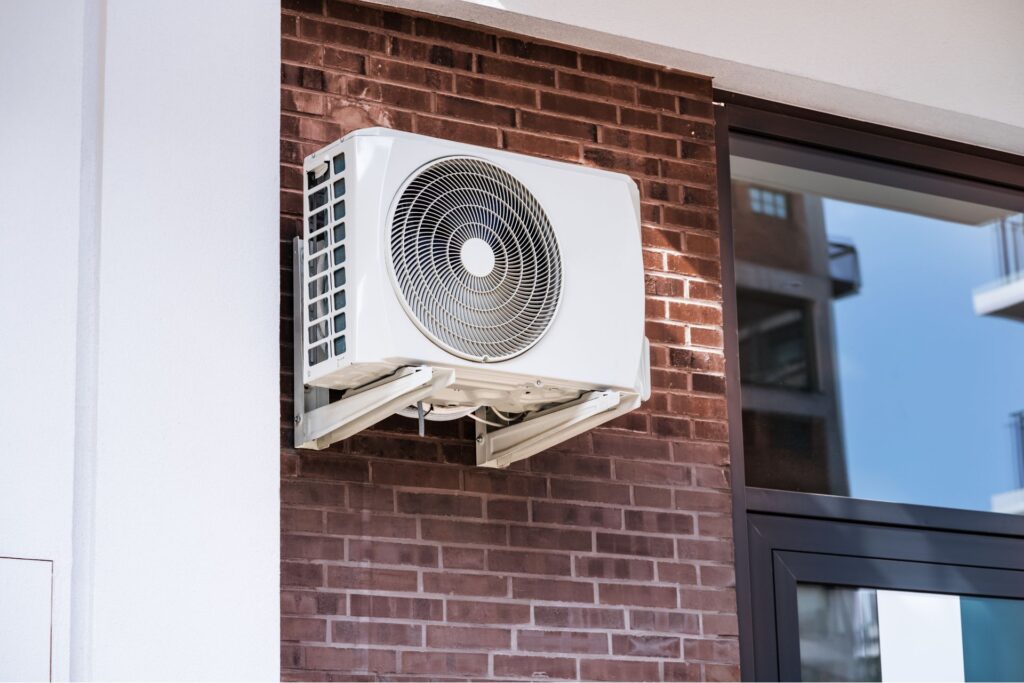Welcome to your go-to guide for knowing when to replace your gutters in New Zealand! Your gutters play a crucial role in protecting your home from water damage, directing rainwater away from your foundation, walls, and roof. However, with NZ’s ever-changing weather—frequent rain, strong winds, and occasional storms—gutters can wear out faster than you might expect. Ignoring failing gutters can lead to costly problems like leaks, mold growth, and structural damage. But how do you know when it’s time to repair or fully replace them? In this article, we’ll walk you through the key signs that indicate your gutters are past their prime, help you decide between repair and replacement, and break down the costs involved. Whether you’re a homeowner, landlord, or property manager, staying on top of gutter maintenance can save you money and protect your property in the long run. Let’s dive in!
You may need to replace your gutters in NZ if you notice visible cracks, rust, or sagging, frequent water overflow, leaks, or mold growth around your home’s exterior. Other signs include gutters pulling away from the roofline or being over 20 years old. Ignoring these issues can lead to costly water damage, so it’s best to inspect your gutters regularly and replace them when necessary to protect your home.
- Why Gutters Matter: Their Role In Protecting Your Home
- Signs Your Gutters Need Replacing
- Repair Vs. Replacement: Making The Right Choice
- Choosing The Right Gutters For NZ Homes: A Complete Guide
- Best Materials for New Zealand’s Climate
- Aluminium Gutters – The Most Popular Choice
- Steel Gutters – Durable but Requires Maintenance
- PVC (Vinyl) Gutters – Affordable but Less Durable
- Gutter Styles & Considerations
- Gutter Guards & Maintenance Tips
- Investing in Gutter Guards
- Routine Maintenance Tips to Prolong Lifespan
- Cost Of Gutter Replacement In NZ: What To Expect
- Expert Tips For Maintaining Your Gutters & Avoiding Costly Repairs
- FAQs: About When To Know When Gutters Need Replacing NZ
- Conclusion
- Find A Professional Roofing Company Near You!
Why Gutters Matter: Their Role In Protecting Your Home
Gutters might not be the first thing you think about when it comes to home maintenance, but they play a crucial role in protecting your property from serious water damage. Without a properly functioning gutter system, your home is vulnerable to structural issues that can be expensive and time-consuming to fix. Whether you live in a city like Auckland, where rainfall is frequent, or in a coastal region where wind and salt exposure accelerate wear and tear, maintaining your gutters should be a top priority.
The Primary Function of Gutters
At their core, gutters are designed to collect and direct rainwater away from your home’s foundation, roof, and siding. When rain falls onto your roof, gutters channel the water through downspouts, ensuring it drains safely away from the base of your house. This might seem like a simple job, but it has a significant impact on preventing a range of structural problems.
A well-functioning gutter system helps:
- Protect your foundation – Excess water pooling around the foundation can lead to cracks, weakening the structural integrity of your home over time.
- Prevent roof damage – Water that doesn’t drain properly can back up under shingles, leading to leaks, mold growth, and rot.
- Preserve siding and exterior walls – Without gutters, rainwater can run down the sides of your house, causing stains, mold, and even wood rot if left unchecked.
- Reduce soil erosion – When water isn’t properly diverted, it can wash away soil around your home, leading to uneven ground, damaged landscaping, and potential foundation instability.
The Impact of Faulty or Failing Gutters
When gutters become clogged, damaged, or start pulling away from the house, they can no longer do their job effectively. Many homeowners don’t notice gutter problems until it’s too late, and by then, water damage may have already taken hold. Here are some common issues caused by failing gutters:
- Mold and Mildew Growth – Constant moisture buildup from overflowing gutters can lead to mold growth on walls, ceilings, and even inside your home. Not only does this damage surfaces, but it can also pose health risks, especially for those with respiratory conditions.
- Basement and Crawl Space Flooding – When rainwater isn’t directed away properly, it seeps into the ground and can leak into basements or crawl spaces, leading to costly repairs.
- Erosion and Landscaping Damage – Poor drainage can wash away flower beds, destroy garden paths, and create unsightly patches of dead grass where water collects.
- Fascia and Soffit Damage – Water that spills over the edges of gutters can soak into the wooden fascia boards supporting the system, causing rot and making the entire gutter system unstable.
New Zealand’s Climate and Its Effect on Gutters
New Zealand’s diverse climate means gutters must withstand a range of weather conditions. Some regions, such as the West Coast, experience high rainfall throughout the year, putting constant pressure on gutters to perform efficiently. In other areas, strong winds, especially in Wellington and coastal towns, can cause gutters to loosen or fill with debris more quickly.
Key weather factors that affect gutters in NZ:
- Heavy Rainfall: Gutters need to handle large volumes of water efficiently, or they risk overflowing.
- High Winds: Strong gusts can dislodge sections of gutters, causing them to sag or pull away from the fascia.
- Salt Exposure: Coastal homes face added wear and tear due to salty air, which can lead to faster corrosion of metal gutters.
- Falling Leaves and Debris: In tree-heavy areas, gutters can become clogged quickly, leading to blockages and water overflow.
Because of these factors, regular gutter maintenance is essential to keep your home safe from water-related damage. Checking for early warning signs—such as sagging gutters, cracks, or water pooling around your foundation—can help prevent costly repairs down the line. If your gutters are old, rusted, or frequently overflowing despite cleaning, it may be time to consider a replacement to protect your home from New Zealand’s ever-changing weather conditions.
By understanding the role gutters play and how they’re affected by local climate conditions, homeowners can take proactive steps to ensure their property remains in excellent condition for years to come.

Signs Your Gutters Need Replacing
Your gutters play a crucial role in protecting your home from water damage, but like any part of a house, they don’t last forever. Over time, wear and tear can lead to inefficiencies, causing potential damage to your roof, walls, foundation, and landscaping. Recognizing the signs that your gutters need replacing can save you from expensive repairs down the line. Below are the key indicators that it might be time to invest in new gutters.
Visible Physical Damage
One of the easiest ways to determine if your gutters need replacing is by visually inspecting them. If you notice cracks, holes, or rust patches, it’s a clear sign that your gutter system is deteriorating. These openings allow water to escape before reaching the downspouts, leading to water pooling around your home’s foundation, which can cause structural damage over time.
In coastal areas of New Zealand, where the salty air accelerates corrosion, gutters may start showing signs of rust or peeling paint sooner than expected. Peeling paint isn’t just an aesthetic issue—it often means that water is not flowing properly and has been sitting in the gutter for extended periods, weakening the material. If rust or corrosion has spread across multiple sections, replacing your gutters is a more cost-effective solution than attempting spot repairs.
Frequent Water Overflow & Pooling
Gutters are designed to channel water efficiently away from your home, so if you’re noticing water spilling over the edges during rainfall, it’s a sign something is wrong. While clogged gutters could be the culprit, persistent overflowing even after cleaning suggests deeper issues like improper slope, damaged sections, or an undersized system that can’t handle heavy rainfall.
Another warning sign is water pooling around the foundation despite properly placed downspouts. This happens when gutters fail to direct water efficiently due to cracks, misalignment, or sagging. If ignored, this can lead to foundation erosion, basement flooding, and mold growth. If you’re experiencing regular overflow despite routine maintenance, it’s time to consider replacing your gutters.
Sagging or Pulling Away from the Roofline
Well-installed gutters should be securely attached to your roofline with strong brackets. If you notice sections of your gutters sagging or pulling away from the fascia board, it indicates a serious structural problem. This could be due to weakened fasteners, heavy debris buildup, or long-term exposure to harsh weather.
Sagging gutters can no longer channel water properly, leading to overflow and leaks that can damage your home’s exterior. If left unchecked, the additional weight could cause sections to completely detach, putting your home at risk of water damage. While minor sagging can sometimes be fixed with new brackets, extensive detachment often signals that a full replacement is needed.
Persistent Leaks or Dripping Water
Leaks are a major sign that your gutters are failing. If water continues to drip from the seams, joints, or cracks in your gutters even when it’s not raining, it’s an indication that your gutter system is compromised. Temporary fixes like sealants may work for small leaks, but if leaks are appearing in multiple places, it’s a sign that the material has weakened and is beyond repair.
Persistent leaks mean that water is not being effectively directed away from your home, leading to moisture buildup near walls, windows, and the foundation. Over time, this can result in wood rot, interior leaks, and even pest infestations, as damp environments attract termites and other insects. If you’ve tried sealing leaks with no success, replacing your gutters is the best long-term solution.
Presence of Mold, Mildew, or Rot Around the House
If you’ve noticed mold growth, mildew stains, or signs of rot on your siding, walls, or foundation, your gutters may be to blame. When gutters fail to properly direct rainwater away from your home, moisture accumulates in areas that should remain dry. Over time, this creates the perfect breeding ground for mold and mildew, which can not only damage your home’s structure but also pose serious health risks to those living inside.
Additionally, damp conditions around the foundation can cause wooden elements of your home—like fascia boards, soffits, and even structural beams—to rot. If left untreated, this can weaken your home’s stability and lead to costly repairs. If you’re noticing these issues and suspect your gutters are the cause, it’s best to have them inspected and replaced if necessary.
Age of the Gutters
Even if your gutters appear to be functioning, their age is a critical factor to consider. Most gutters have a lifespan of 20–30 years, depending on the material, weather exposure, and maintenance. If your gutters are approaching or have exceeded this age, they may be more susceptible to hidden wear and tear, making them prone to sudden failures.
Older gutters often develop small, unnoticeable issues that worsen over time. The seams may weaken, rust may spread internally, and brackets may loosen without visible warning signs. Instead of waiting for significant damage to occur, replacing aging gutters proactively can help you avoid unexpected home repairs and ensure your property remains protected from water damage.
Your gutters are an essential part of your home’s defense against the elements. Ignoring signs of deterioration can lead to extensive and costly damage, making timely gutter replacement a wise investment. By regularly inspecting your gutters and addressing issues like cracks, sagging, leaks, and mold growth, you can maintain a functional and efficient drainage system. If your gutters are old or consistently failing despite repairs, replacing them with a high-quality system will provide long-term protection and peace of mind.
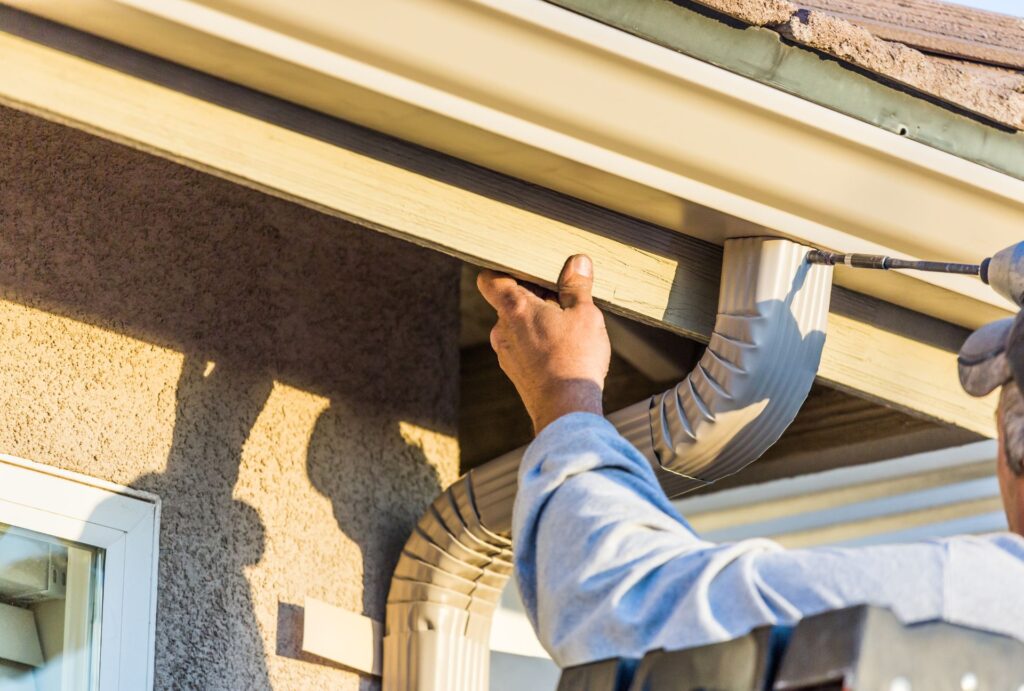
Repair Vs. Replacement: Making The Right Choice
When it comes to maintaining your gutters, one of the biggest decisions homeowners face is whether to repair or replace them. While minor issues can often be fixed with simple repairs, extensive damage may require a full replacement to prevent long-term problems. Below, we break down when repairs are enough, when replacement is necessary, and the cost comparison of both options in New Zealand.
When Repairs Are Enough
Not every gutter problem means you need to replace the entire system. In many cases, small issues can be resolved with simple repairs, saving you time and money. Here are some common situations where repairs are usually sufficient:
Small Leaks or Isolated Damage
- Minor cracks or leaks can often be sealed using a waterproof gutter sealant or patching tape.
- If the joints between sections of the gutter are leaking, applying a fresh layer of sealant may fix the issue.
Minor Sagging or Loose Brackets
- Gutters that are slightly sagging or pulling away from the roof can often be fixed by tightening or replacing the brackets.
- In some cases, adding additional supports can reinforce weak spots and extend the life of the gutters.
Clogged Downspouts or Blocked Gutters
- If water is not draining properly due to blockages, a thorough cleaning may be all that’s needed.
- Installing gutter guards or screens can help prevent debris buildup in the future.
If your gutters have minor wear and tear but are still structurally sound, a repair is the most cost-effective solution. However, if issues persist despite multiple repairs, a replacement may be the better long-term investment.
When Replacement is Necessary
If your gutters are showing widespread damage or repeated failures, replacing them may be the smarter choice. Here are key signs that indicate it’s time for a full gutter replacement:
Multiple Leaks or Extensive Rust
- If leaks appear in multiple sections and keep coming back after repairs, it’s a sign that the material is deteriorating.
- Rust is a major red flag, especially for steel gutters, as it weakens the structure and leads to further damage.
Severe Sagging or Pulling Away from the Roofline
- Gutters that are sagging significantly or detaching from the fascia indicate underlying structural failure.
- This could be due to water damage weakening the fascia boards or the weight of debris pulling the gutters down.
Structural Damage to Your Home
- If faulty gutters have caused water damage to your foundation, walls, or roof, replacing them is crucial to prevent costly repairs.
- Water stains, mold growth, or rotting wood near the gutter system are signs that your current gutters are not doing their job.
Your Gutters Are Over 20 Years Old
- Most gutters last between 20–30 years, depending on the material and maintenance.
- If your gutters are approaching the end of their lifespan, replacing them preemptively can prevent unexpected failures.
When gutter damage is extensive, continuous repairs can become more expensive than simply installing a new system. Investing in a replacement ensures better performance, longer durability, and improved home protection.
Cost Comparison: Repairing Small Sections vs. Full Replacement in NZ
Understanding the cost difference between repairing and replacing gutters can help you make a financially sound decision. Here’s a general breakdown of what to expect in New Zealand:
Cost of Gutter Repairs
- Minor Leak Repairs: $50 – $150 per section (includes sealing small cracks or reattaching joints).
- Bracket or Hanger Replacement: $5 – $15 per bracket, plus labor costs ($100 – $300 for a full realignment).
- Gutter Cleaning & Unclogging: $150 – $350 for a professional cleaning service.
Cost of Gutter Replacement in NZ
- Aluminium Gutters: $40 – $80 per meter.
- Steel Gutters: $50 – $100 per meter.
- PVC Gutters: $30 – $60 per meter.
- Installation Costs: $500 – $2,500 depending on house size and complexity.
While repairs are the more affordable short-term option, if your gutters are in poor condition, frequent patch-ups can add up quickly. A full replacement may seem like a bigger upfront investment, but it provides better longevity and protection against water damage.
Deciding between repairing and replacing your gutters comes down to the severity of the damage and the long-term cost implications. If the issues are minor and localized, a repair can extend the lifespan of your gutters and save you money. However, if your gutters are old, heavily damaged, or failing to drain water properly, a full replacement is the best solution to protect your home from costly water damage.
By keeping an eye on the condition of your gutters and acting early, you can prevent major structural issues and ensure your home remains safe from the unpredictable New Zealand weather. If you’re unsure about the state of your gutters, consider consulting a professional for an expert inspection and recommendation.
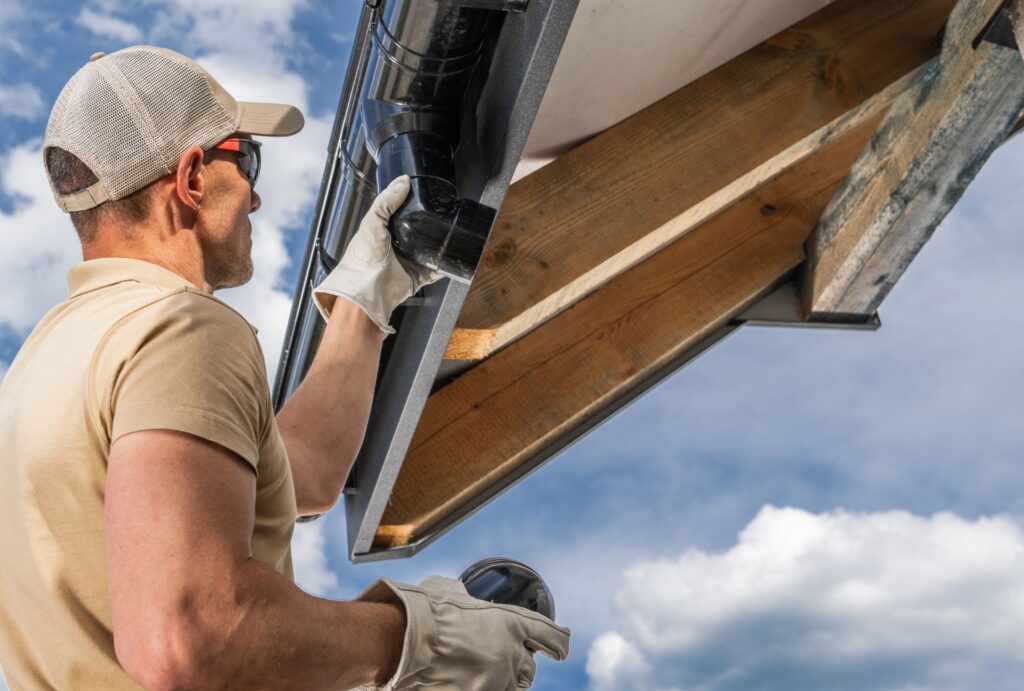
Choosing The Right Gutters For NZ Homes: A Complete Guide
Selecting the right gutters for your home in New Zealand isn’t just about aesthetics—it’s a crucial decision that impacts your home’s drainage efficiency, durability, and long-term maintenance costs. Given New Zealand’s diverse climate, with high rainfall in some regions and salt-laden coastal air in others, choosing the best gutter material, style, and maintenance strategy is essential. Below, we’ll explore the best gutter materials for NZ homes, the different styles available, and how to maintain your gutters to keep them in top condition.
Best Materials for New Zealand’s Climate
When it comes to selecting the right gutter material, homeowners must consider durability, weather resistance, and long-term maintenance. Here’s a breakdown of the most common gutter materials used in New Zealand:
Aluminium Gutters – The Most Popular Choice
Aluminium is one of the most widely used gutter materials in NZ, and for good reason. It’s lightweight, corrosion-resistant, and requires minimal maintenance. Unlike steel, it won’t rust over time, making it an excellent choice for areas with frequent rain or coastal exposure. Aluminium gutters also come in a variety of colors, allowing homeowners to match them to their roofing and exterior design.
Pros:
- Rust-resistant and ideal for coastal regions.
- Lightweight, making installation easier.
- Available in a variety of styles and colors.
- Low maintenance and long-lasting.
Cons:
- Can dent easily if impacted by branches or ladders.
- Slightly more expensive than PVC.
Steel Gutters – Durable but Requires Maintenance
Steel gutters are a strong and durable option, capable of withstanding heavy rainfall and extreme weather conditions. However, unless you choose galvanized or stainless steel, they can be prone to rust over time. If your home is near the coast, where salty air accelerates corrosion, you’ll need to ensure regular maintenance and protective coatings.
Pros:
- Extremely strong and can handle heavy rain and wind.
- Can last decades with proper maintenance.
- Less prone to expansion and contraction compared to other materials.
Cons:
- Prone to rust if not properly maintained.
- Heavier than aluminium, making installation more complex.
- More expensive than PVC.
PVC (Vinyl) Gutters – Affordable but Less Durable
PVC gutters are the most budget-friendly option and are popular in NZ due to their affordability and ease of installation. They are resistant to rust and corrosion but are not as durable as metal alternatives. In regions with harsh weather conditions, PVC gutters may become brittle and crack over time, especially with prolonged exposure to UV rays.
Pros:
- Affordable and easy to install.
- Rust and corrosion-resistant.
- Ideal for low-maintenance homes.
Cons:
- Prone to cracking in extreme temperatures.
- Less durable than metal gutters.
- Can warp over time, requiring replacements sooner.
Gutter Styles & Considerations
Beyond material choice, the style of gutter you choose can impact water drainage, maintenance requirements, and the overall look of your home. Here are the most common gutter styles used in New Zealand:
Half-Round Gutters – Traditional & Efficient
Half-round gutters are a classic choice, featuring a smooth, rounded design that efficiently directs water away from your roof. These gutters are especially popular in heritage homes and areas with moderate rainfall. Their curved shape reduces the likelihood of debris buildup, making them a low-maintenance option.
Best for: Older homes, traditional architecture, and areas with moderate rainfall.
Box Gutters – Ideal for Modern Homes & Commercial Buildings
Box gutters are commonly used in contemporary home designs and commercial buildings. They are built into the structure of the roof rather than attached to the eaves, creating a sleek and seamless look. While they handle large volumes of water effectively, they require professional installation and regular maintenance to prevent blockages.
Best for: Modern homes, flat roofs, and commercial buildings.
Seamless Gutters – Fewer Leaks, Long-Lasting
Seamless gutters are custom-made on-site to fit your home, eliminating joints and reducing the risk of leaks. This makes them one of the most durable and long-lasting gutter options. They are ideal for homeowners looking for a low-maintenance, high-performance drainage system. However, because they require specialized equipment for installation, they must be installed by professionals.
Best for: Homeowners wanting a high-performance, leak-resistant option with minimal maintenance.
Gutter Guards & Maintenance Tips
Even the best gutter system requires regular upkeep to function effectively. Gutter guards can significantly reduce maintenance by preventing leaves, twigs, and debris from clogging the system. Here’s how you can ensure your gutters remain in top condition:
Investing in Gutter Guards
Gutter guards, also known as leaf guards, are a great investment for NZ homeowners, especially in leafy regions like Auckland and Wellington. They help prevent debris buildup, reducing the need for frequent cleaning and minimizing the risk of blockages that can lead to overflow and water damage.
Types of Gutter Guards:
- Mesh Screens: Metal or plastic screens that block debris while allowing water to pass through.
- Foam Inserts: Foam-filled guards that fit inside the gutter to filter out debris.
- Reverse Curve Guards: Designed to direct rainwater into the gutter while keeping leaves out.
Installing gutter guards can help extend the lifespan of your gutters and reduce cleaning time, but they still require occasional maintenance to remove small debris that may accumulate over time.
Routine Maintenance Tips to Prolong Lifespan
Regular maintenance is key to ensuring your gutters function properly and last as long as possible. Here are some essential tips:
- Clean your gutters at least twice a year – once in autumn to remove falling leaves and once in spring to clear out any debris from winter storms.
- Check for leaks and cracks after heavy rain to catch issues early before they worsen.
- Ensure downspouts are clear so that water can flow freely and away from your foundation.
- Look for signs of sagging or detachment – if your gutters are pulling away from the roof, it could indicate structural damage or excess weight from debris buildup.
- Trim overhanging branches to prevent leaves and twigs from clogging your gutters.
Choosing the right gutters for your NZ home is an important decision that affects both functionality and long-term maintenance. Aluminium, steel, and PVC each have their advantages, with aluminium being the most popular for its balance of durability and affordability. The style of gutter you choose—whether half-round, box, or seamless—should match your home’s architecture and rainfall needs. Additionally, investing in gutter guards and following a regular maintenance schedule can help extend the lifespan of your gutters and protect your home from costly water damage.
By selecting the right materials, style, and maintenance approach, you can ensure your home remains safe and well-protected, regardless of New Zealand’s unpredictable weather conditions. If you’re unsure about which option is best for your home, consulting with a guttering professional can help you make the right choice for long-term performance and durability.
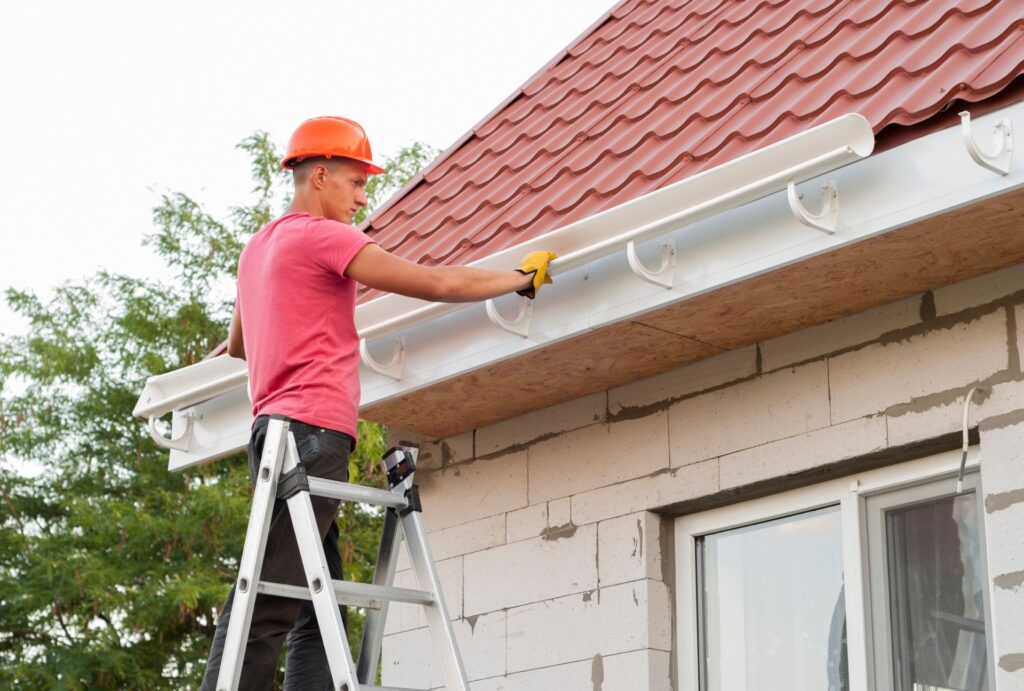
Cost Of Gutter Replacement In NZ: What To Expect
Replacing gutters is a necessary investment to protect your home from water damage, but how much should you expect to pay in New Zealand? The cost of gutter replacement varies depending on factors like the type of material, labor costs, and additional features such as downspouts or gutter guards. Whether you’re considering a DIY approach or hiring a professional, understanding these costs will help you make an informed decision and avoid unexpected expenses.
Breakdown of Average Gutter Replacement Costs per Meter
The cost of new gutters in NZ depends largely on the material you choose. Some materials are more durable but come with a higher price tag, while others are more affordable but may require more frequent maintenance. Here’s an overview of the average price range per meter for different gutter types:
- PVC (Vinyl) Gutters: $40 – $70 per meter
- The most affordable option, lightweight, and resistant to rust. However, it can become brittle over time, especially in extreme weather conditions.
- Aluminium Gutters: $50 – $100 per meter
- A popular choice in NZ due to its durability, rust resistance, and lightweight nature. Aluminium is also low-maintenance and holds up well in coastal areas.
- Steel Gutters: $80 – $150 per meter
- Offers superior strength and longevity but can be prone to rust if not properly maintained. Best suited for areas with heavy rainfall or high wind exposure.
- Copper Gutters: $150 – $300 per meter
- A premium option that adds a sophisticated look to your home. Copper gutters are highly durable and corrosion-resistant but come with a higher upfront cost.
Prices vary based on supplier, region, and the complexity of your home’s gutter system. If you live in a remote or high-cost-of-living area, expect to pay on the higher end of these ranges.
Installation Costs: DIY vs. Hiring a Professional
Once you’ve chosen the type of gutters, the next big decision is whether to install them yourself or hire a professional. Here’s a cost breakdown of both options:
DIY Gutter Installation Costs
- Cost of materials: $40 – $300 per meter (depending on the material).
- Tools and accessories: $100 – $300 (ladders, brackets, sealants, saws, etc.).
- Time investment: Typically takes a full weekend for a standard single-story home.
- Risk factor: Working at heights can be dangerous, especially if you’re inexperienced.
DIY installation may seem cost-effective, but it requires precise measurements and careful sealing to prevent leaks. If gutters are improperly installed, it could lead to long-term water damage that costs far more to fix.
Professional Gutter Installation Costs
- Labor costs: $40 – $100 per meter for standard installation.
- Total installation cost: $500 – $2,500 for most homes, depending on the size and complexity.
- Expertise and warranty: Professionals ensure proper installation, and many companies offer warranties on their work.
- Time efficiency: Installation is typically completed in a day or two, minimizing disruption to your home.
Hiring a professional ensures the job is done correctly, reducing the risk of leaks or improper drainage. If your home has multiple stories or a complex roofline, professional installation is highly recommended.
Additional Costs to Consider
Gutter replacement often involves more than just swapping out old gutters for new ones. Here are some additional costs you should budget for:
Downspouts & Extensions
- Cost: $20 – $80 per downspout
- Why it matters: Downspouts direct water away from your foundation, preventing erosion and basement flooding. If your existing downspouts are damaged or undersized, replacing them ensures optimal water flow.
Fascia Board Repairs
- Cost: $20 – $60 per meter (plus labor).
- Why it matters: Gutters attach to fascia boards, which can rot due to prolonged exposure to water. If your fascia is damaged, it will need to be replaced before installing new gutters.
Gutter Guards
- Cost: $10 – $40 per meter
- Why it matters: Gutter guards help prevent leaves, debris, and pests from clogging your gutters. They reduce maintenance needs and extend the lifespan of your gutter system, making them a worthwhile investment.
Disposal of Old Gutters
- Cost: $50 – $200 (depending on disposal requirements).
- Why it matters: Some installers include removal in their service, while others charge extra. If your old gutters contain hazardous materials (such as lead-based paint), disposal costs may be higher.
Is Gutter Replacement Worth the Cost?
While replacing gutters in NZ comes with upfront costs, it’s a smart investment in your home’s long-term protection. Well-maintained gutters prevent costly water damage, mold growth, and structural issues. If your gutters are over 20 years old, sagging, leaking, or causing drainage problems, it’s time to consider a replacement.
To save on costs, compare quotes from multiple professionals, choose materials suited to NZ’s climate, and consider adding gutter guards to extend their lifespan. Whether you go the DIY route or hire an expert, ensuring your gutters are in top condition will protect your home from the elements and save you money on future repairs.
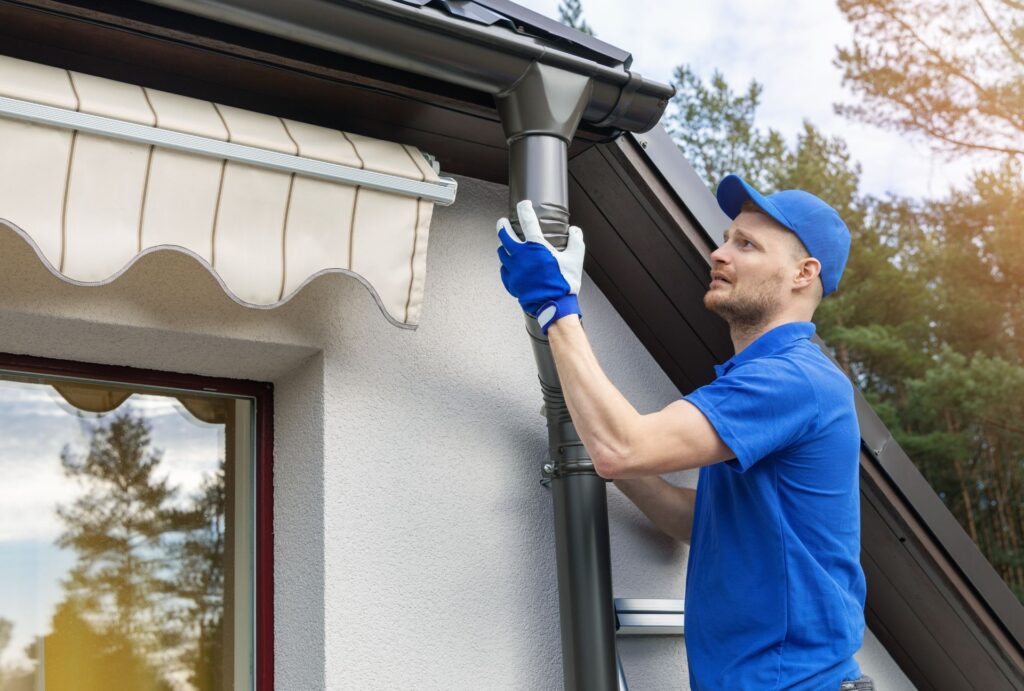
Expert Tips For Maintaining Your Gutters & Avoiding Costly Repairs
Gutters play a crucial role in protecting your home from water damage, but like any part of your house, they require regular maintenance to function properly. Neglecting your gutters can lead to costly repairs, including roof damage, foundation issues, and mold growth. The good news is that with some simple maintenance routines and proactive inspections, you can extend the lifespan of your gutters and avoid unnecessary expenses. Below, we’ll cover expert-recommended strategies for keeping your gutters in top shape, including cleaning schedules, damage inspections, and when to call in a professional.
Regular Cleaning Schedule: How Often Should You Clean Your Gutters?
Keeping your gutters clean is the first and most important step in maintaining their effectiveness. Leaves, dirt, and other debris can quickly accumulate, leading to blockages that cause water to overflow and pool around your foundation. The frequency of cleaning depends on where you live and the surrounding environment.
- Urban Areas: If you live in a city or suburban area with few trees around your home, cleaning your gutters twice a year—once in autumn and once in spring—is usually enough to keep them in good condition.
- Rural Areas or Properties with Trees: Homes surrounded by trees, especially deciduous varieties, need more frequent cleaning. Aim for three to four times a year, especially after the leaves fall in autumn. Pine trees shed year-round, meaning you may need to check your gutters every two to three months.
- Coastal or High-Wind Areas: In regions prone to strong winds or salty air, such as parts of Auckland, Wellington, or Christchurch, debris can accumulate quickly. Cleaning your gutters quarterly can prevent premature wear from salt and wind-driven dirt.
- Heavy Rainfall Areas: If you live in regions with frequent rain, like West Coast or Fiordland, checking your gutters after major storms is essential to prevent blockages and ensure water flows freely.
Pro Tip:
After cleaning, flush the gutters with water using a garden hose to check for any clogs in the downspouts. If water isn’t flowing smoothly, there may be a blockage that needs to be removed.
Inspecting for Early Signs of Damage: What to Look For
Regular inspections can help you identify minor issues before they turn into major, expensive problems. Aim to inspect your gutters at least twice a year, preferably during your routine cleaning sessions. Additionally, always check your gutters after heavy rain or storms, as these can cause sudden damage.
Here’s what to look for during an inspection:
- Leaks or Dripping Water: If you notice water dripping from the middle of your gutter system rather than the downspouts, there may be cracks or holes that need sealing.
- Rust, Corrosion, or Peeling Paint: Rust is a sign that moisture is sitting in your gutters for too long, possibly due to poor drainage. Painted gutters that are peeling may also indicate water-related issues.
- Sagging or Detached Gutters: If your gutters appear to be pulling away from the fascia board, the brackets may be loose, or the system may be too clogged with debris, causing excess weight.
- Pooling Water Near Your Foundation: If you see puddles forming around your home’s perimeter, your gutters may not be directing water away efficiently. This could indicate blockages or misaligned downspouts.
- Mold, Mildew, or Water Stains: Any discoloration on your siding, roofline, or near the foundation suggests excess moisture due to failing gutters. Left unchecked, this can lead to structural damage and unhealthy mold growth.
- Pest Infestations: Clogged gutters can become a breeding ground for mosquitoes, rodents, and birds. If you notice nests or signs of pests, it’s a good indication that your gutters need attention.
Pro Tip:
If you’re unsure about the extent of the damage, run a simple water test—pour water into the gutters and observe how it flows. If there are leaks, slow drainage, or overflowing sections, there’s an issue that needs fixing.
DIY Maintenance vs. Professional Inspections: When to Call in an Expert
While basic gutter cleaning and minor repairs can be handled by most homeowners, certain situations require professional expertise. Knowing when to DIY and when to call a professional can save you both time and money.
When DIY Gutter Maintenance is Enough:
- You’re comfortable using a ladder and have the right safety gear.
- The gutters only need simple cleaning or minor repairs (like sealing a small leak with gutter sealant).
- You’re checking for debris or loose brackets and can tighten screws if needed.
- You want to install gutter guards to prevent excessive clogging.
When to Call a Professional Gutter Specialist:
- Your gutters are severely damaged, rusted, or leaking in multiple places.
- You notice your gutters pulling away from the fascia, indicating a more serious structural issue.
- There’s water damage on your roof or siding, suggesting the gutters aren’t draining properly.
- You have a multi-story home and don’t feel comfortable climbing a tall ladder.
- You suspect a blockage in underground drainage pipes, which requires specialized tools to fix.
- You’re considering a full gutter replacement and need expert advice on materials and installation.
Pro Tip:
Hiring a professional for an annual gutter inspection (even if you handle cleaning yourself) can help catch potential problems early and extend the lifespan of your gutters.
Protecting Your Home with Proactive Gutter Maintenance
Maintaining your gutters is one of the simplest and most cost-effective ways to protect your home from water damage. By following a regular cleaning schedule, inspecting for early signs of wear, and knowing when to call in a professional, you can prevent costly repairs and extend the life of your gutter system. Whether you choose to DIY or hire an expert, staying proactive with gutter maintenance will ensure your home remains safe and structurally sound for years to come.
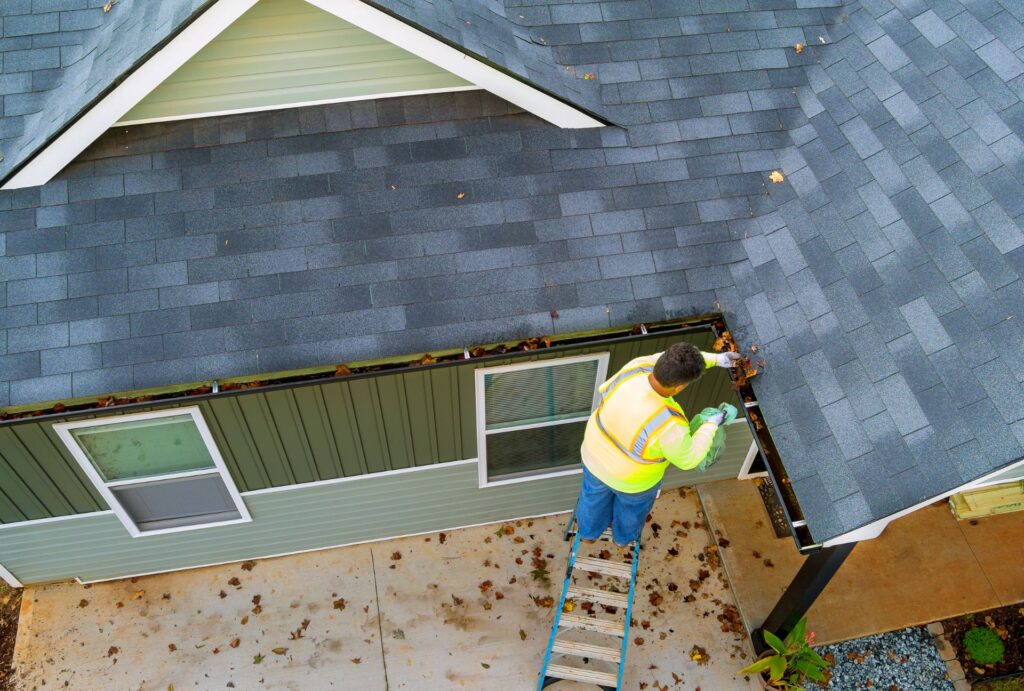
FAQs: About When To Know When Gutters Need Replacing NZ
Conclusion
Maintaining your gutters is essential for protecting your home from costly water damage, and knowing when to replace them can save you from bigger problems down the road. Key signs of failing gutters include cracks, rust, sagging, persistent leaks, water overflow, and mold growth around your home’s exterior. While minor issues like small leaks or loose brackets can often be repaired, widespread rust, structural damage, or aging gutters (typically 20+ years old) are clear indicators that a full replacement is the smarter choice. When selecting new gutters for your NZ home, aluminium is a popular option due to its durability and rust resistance, while steel provides extra strength but requires more maintenance, and PVC offers affordability but may not withstand harsh weather over time. Being proactive with gutter maintenance—regular cleaning, inspections, and investing in gutter guards—can extend their lifespan and prevent expensive repairs. If you’re unsure whether your gutters need replacing, it’s always best to seek a professional inspection to avoid potential structural damage and costly fixes in the future.
Find A Professional Roofing Company Near You!
- Auckland Roofing Company
- Cambridge Roofing NZ
- Central Otago Roofing Services
- Hamilton Roofing Services
- Hastings Roofing Company
- Hawkes Bay Roofing Company
- Kapiti Coast Roofing Services
- Lower Hutt Roofing Services
- Napier Roofing Company
- New Plymouth Roofing Company Taranaki
- North Shore Roofing Company
- Orewa Roofing Company
- Porirua Roofing Services
- Roof Painting Company Auckland
- Roof Repairs Manukau
- Roof Repairs Takanini
- Roofers Papakura
- Roofing Company Auckland
- Roofing Company Invercargill
- Roofing Contractors Northland
- Roofing Contractors South Auckland
- Roofing Contractors Whangarei
- Roofing Palmerston North
- Roofing Waikato
- Roofing Walkworth
- Roofing Wellington
- Te Awamutu Roofing
- Upper Hutt Roofing Services
- Warkworth Roofing Company
About the Author:
Mike Veail is a recognized digital marketing expert with over 6 years of experience in helping tradespeople and small businesses thrive online. A former quantity surveyor, Mike combines deep industry knowledge with hands-on expertise in SEO and Google Ads. His marketing strategies are tailored to the specific needs of the trades sector, helping businesses increase visibility and generate more leads through proven, ethical methods.
Mike has successfully partnered with numerous companies, establishing a track record of delivering measurable results. His work has been featured across various platforms that showcase his expertise in lead generation and online marketing for the trades sector.
Learn more about Mike's experience and services at https://theleadguy.online or follow him on social media:

